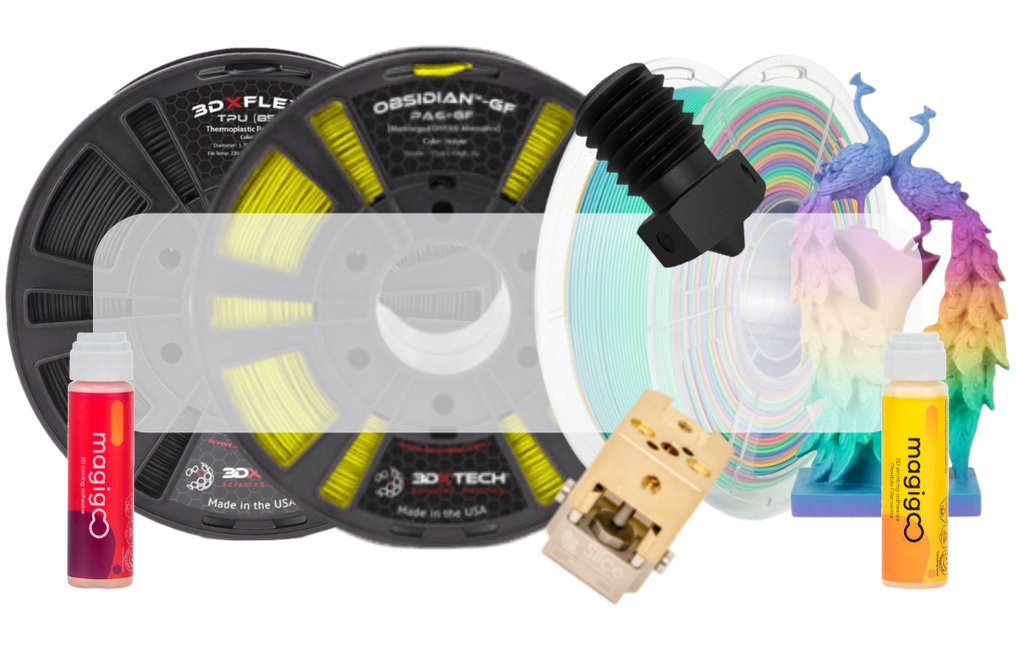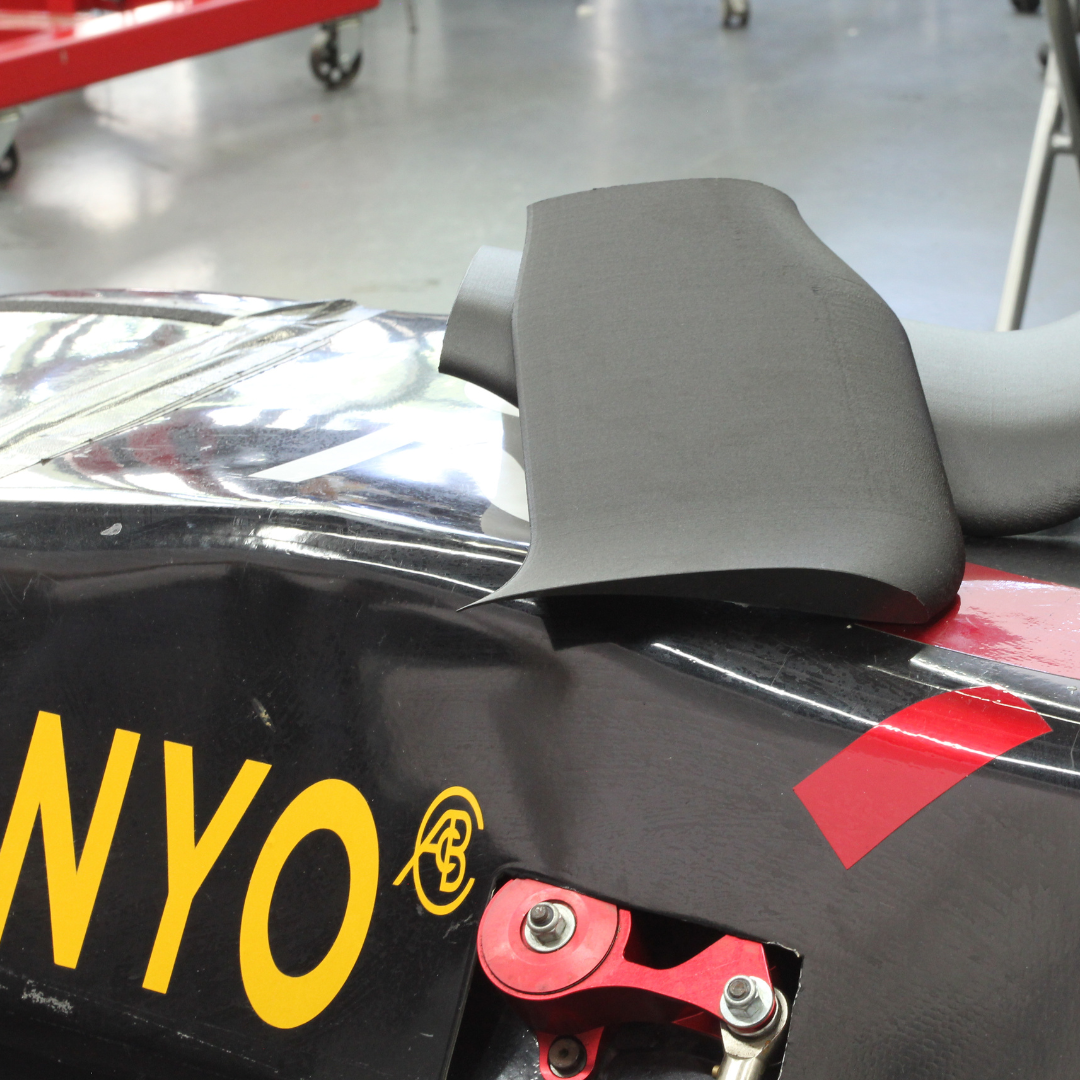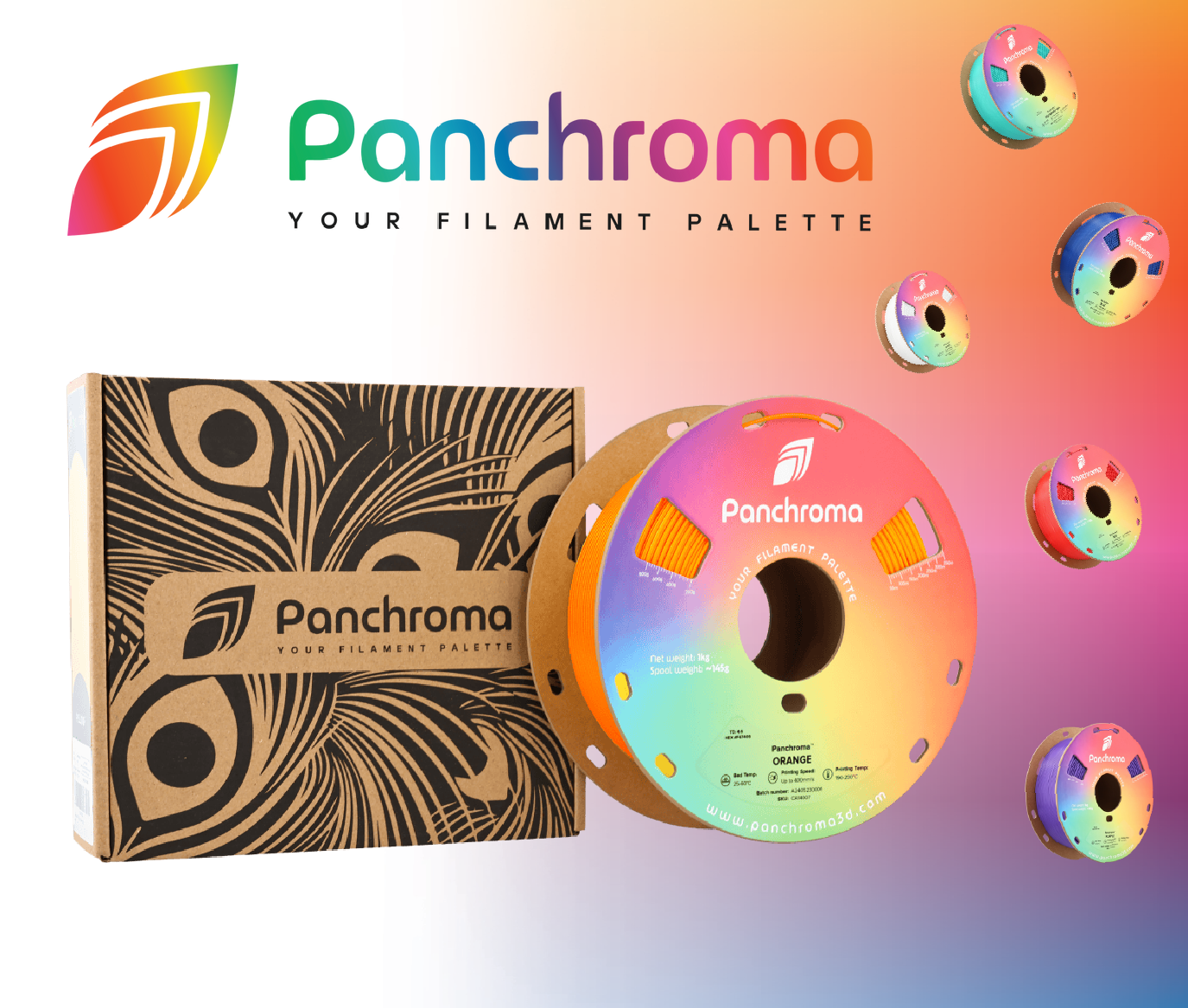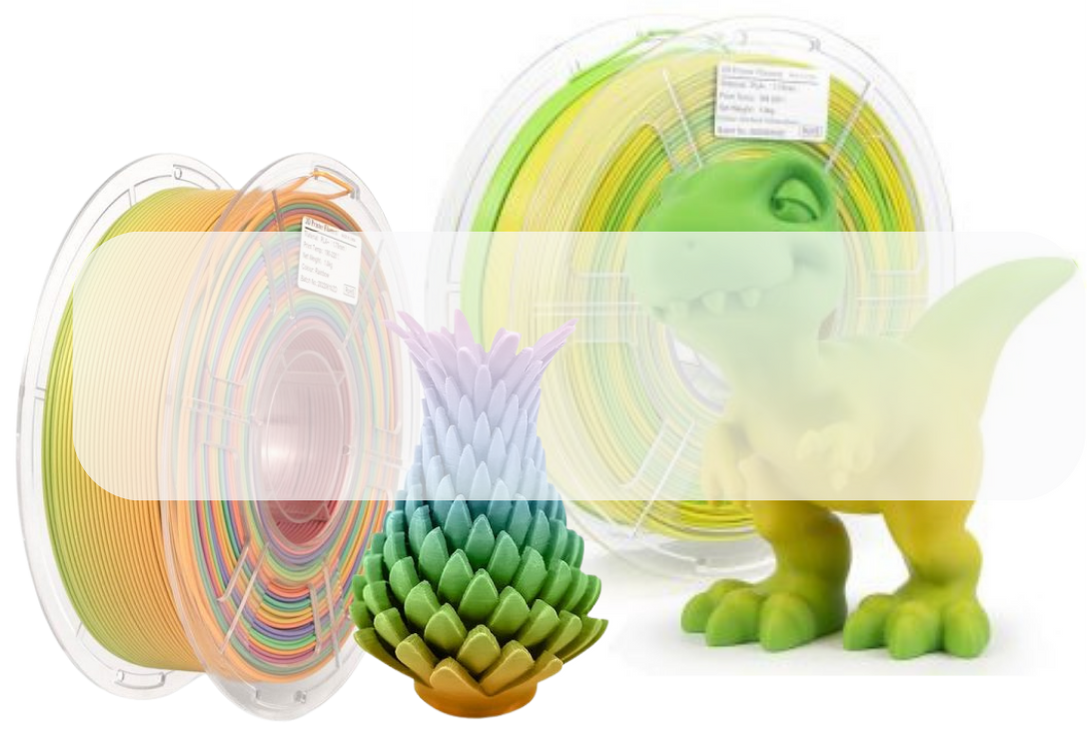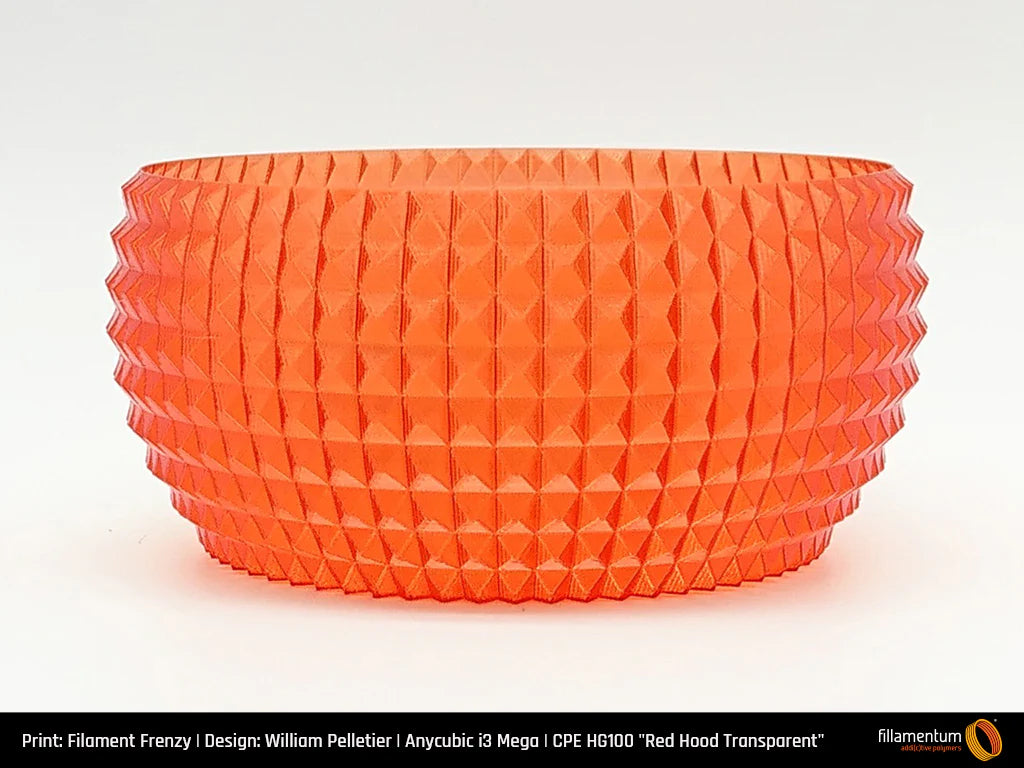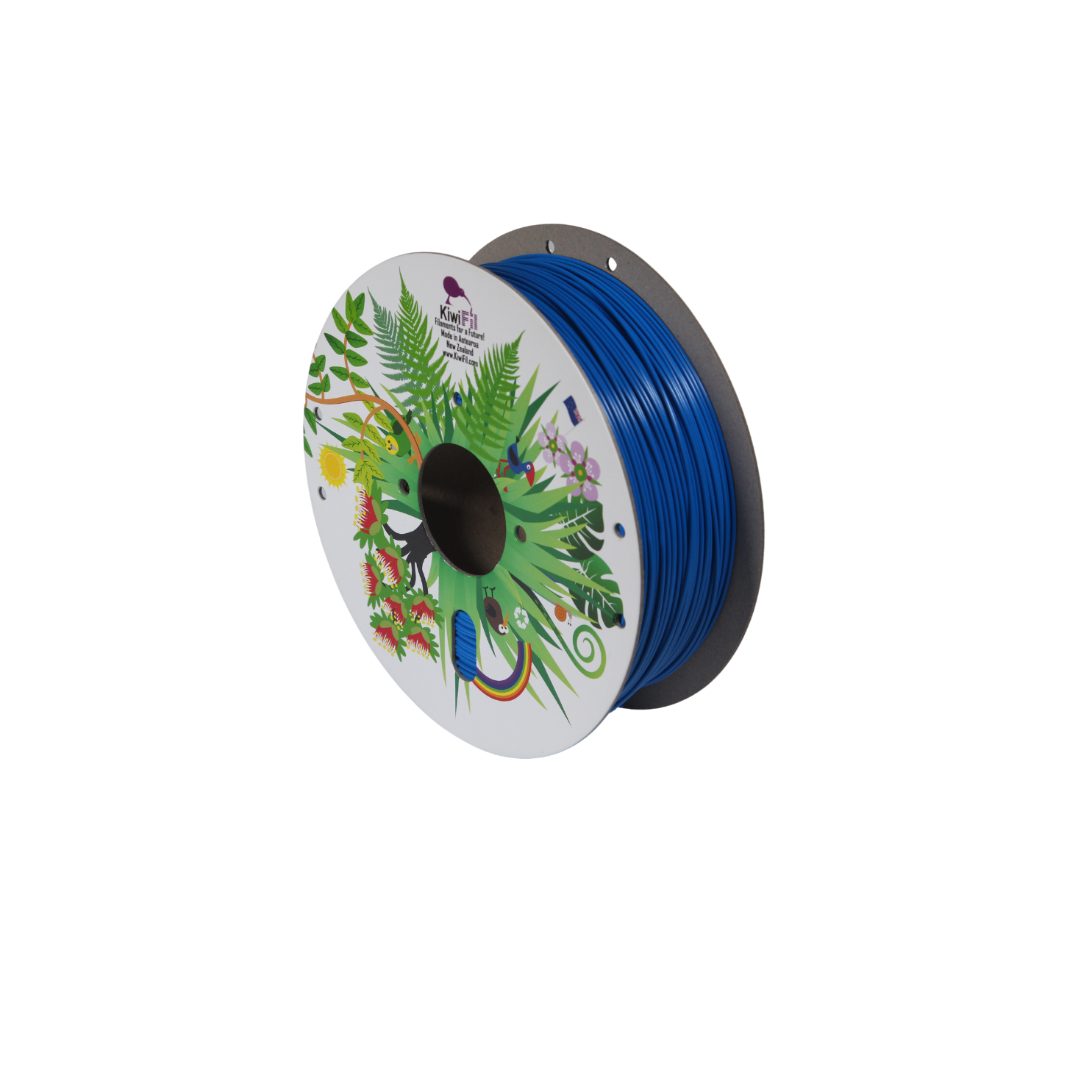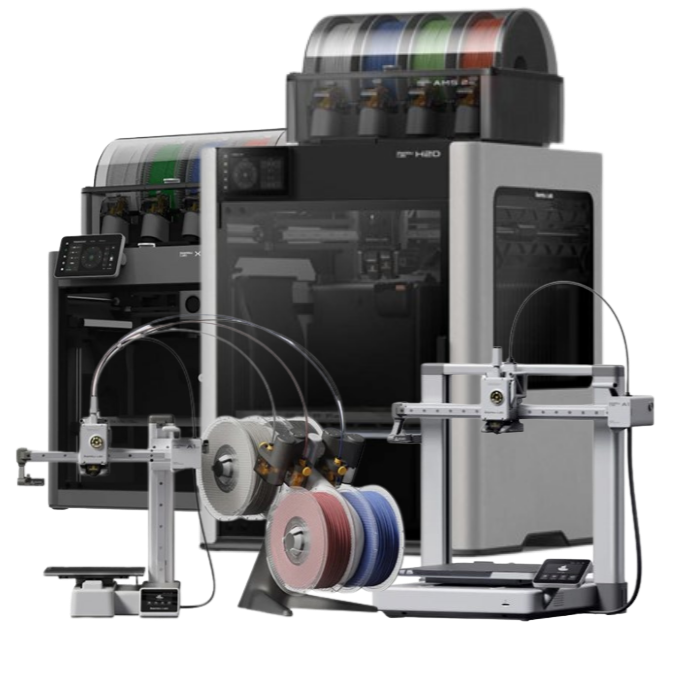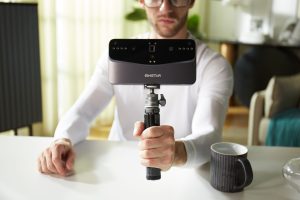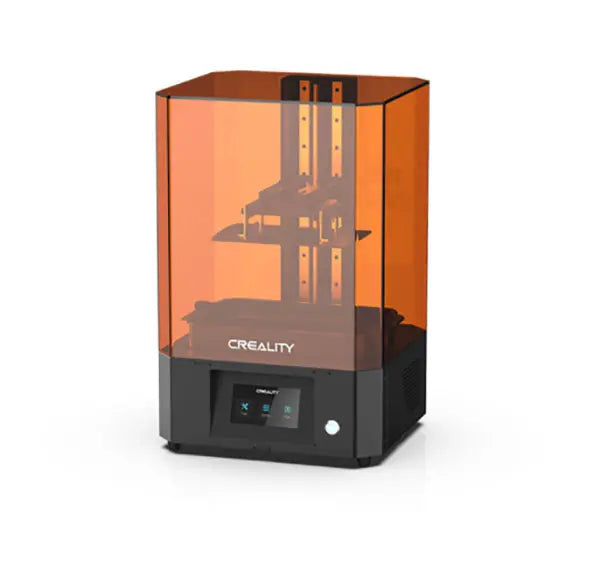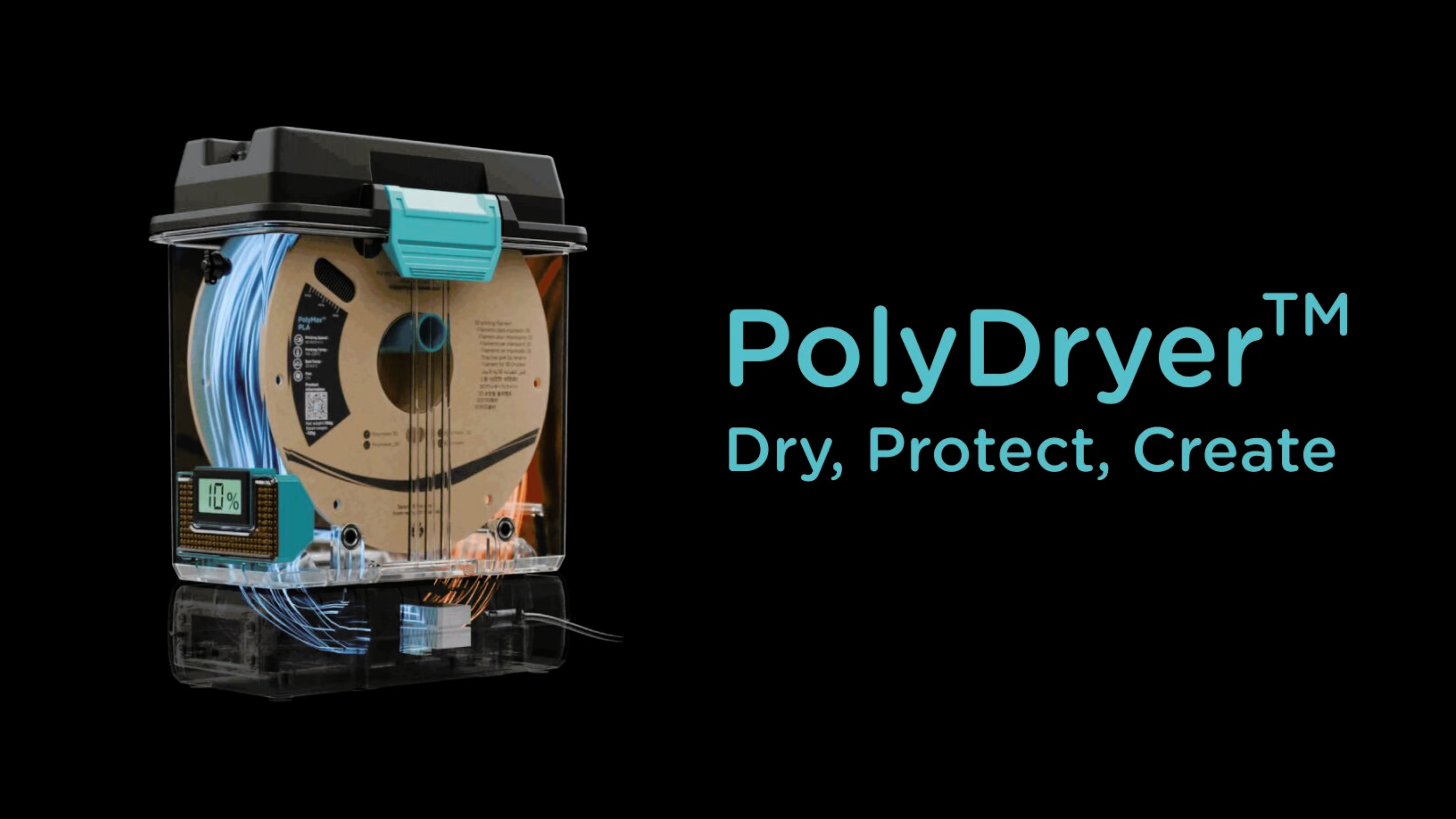Polymaker HT-PLA is an innovative high temperature PLA material, developed to offer a more "life-proof" PLA material with heat stable parts straight off the printer.
- Heat stability up to 130°C (keeps its shape with no load) right off the printer, defined by vicat softening temperature.
- No post-processing or annealing required for high softening temperature.
- High speed formula, up to 300mm/s.
- Same printability as normal PLA and easy-support removal.
- Consistent colour and tolerance (1.75mm diameter +/- 0.02mm)
Printing Settings
| Nozzle Temperature |
210°C - 230°C |
| Build Plate Temperature |
25°C - 60°C |
| Build Surface Material |
Works well with most build surfaces i.e Glass, Blue Tape, BuildTak® etc |
| Build Surface Treatment |
Can apply Magigoo Supergrip or PVA glue to the build surface to improve adhesion. |
| Cooling Fan |
ON |
| Printing Speed |
Up to 300 mm/s |
| Recommended Support Material |
Single Extrusion:
Self Support
Dual Extrusion:
PolyDissolve™ S1 (Dissolve in tap water)
PolySupport™ for PLA (Easy break-away support material)
|
The above are printing recommendations based on 0.4 mm nozzle. Please note ideal printing conditions may vary depending on your 3D printer setup. For high speed 3D printers, make sure to increase your extrusion temperature in order to use higher printing speeds.
Specification
| Net Weight |
1kg |
| Material Type |
High Temp PLA (HT-PLA) |
| Density |
1.28 (g/cm3 at 23˚C) |
Compatibility
Polymaker™ HT-PLA has been engineered with compatibility in mind to print excellently on a wide range of 3D printers.
High rigidity materials like Polymaker™ HT-PLA work best in set ups where the filament guide system is smooth and as no harsh bends.
Of course with thousands of unique 3d printer models on the market, we can't guarantee each filament type will work with every 3D printer. Slicer experience and setting adjustment is always required to get the most out of a material. Before jumping into an ambitious project we always recommend printing some known calibration tests to build or make adjustments to the filament profile.
Technical Data
All testing specimens were printed under the following conditions: Nozzle Temperature = 230˚C, build plate temperature = 50˚C, infil = 100%, cooling fan = ON
All specimens were conditioned at room temperature for 24h prior to testing.
THERMAL PROPERTIES
| |
Value |
Testing Method |
| Glass Transition |
59.8°C |
DSC, 10°C/min |
| Heat Deflection Temperature |
As printed
0.45MPa - 69.9°C
1.8 MPa - 57.2 °C
After annealing
0.45MPa - 106.5°C
1.8 MPa - 59.9 °C
|
ISO 75 |
| Vicat Softening Temperature |
152°C (as printed)
153.2°C (after annealing) |
ISO 306, GB/T 1633 |
MECHANICAL PROPERTIES
| |
As Printed |
Annealed |
Testing Method |
Youngs Modulus
(X-Y) |
2,945 ± 77 MPa |
3,267 ± 66 MPa |
ISO 527, GB/T 1040 |
Youngs Modulus
(Z) |
2,596 ± 160 MPa |
2,596 ± 160 MPa |
Tensile Strength
(X-Y) |
42.86 MPa |
42.86 MPa |
ISO 527, GB/T 1040 |
Tensile Strength
(Z) |
20.83 ± 0.51 MPa |
18.82 ± 0.98 MPa |
Bending Strength
(X-Y) |
74.04 ± 0.66 MPa |
66.75 ± 0.51 MPa |
ISO 178, GB/T 9341 |
Bending Strength
(Z) |
29.39 ± 1.18 MPa |
28.95 ± 1.44 MPa |
Charpy Impact Strength Notched
(X-Y) |
4.94 ± 0.31 kJ/m2 |
4.67 ± 0.2 kJ/m2 |
ISO 179, GB/T 1043 |
Charpy Impact Notched
(Z) |
4.50 ± 0.11 kJ/m2 |
4.39 ± 0.18 kJ/m2 |
We have full MDS and technical data sheets for Polymaker™ HT-PLA and all other Polymaker products.
The typical values presented in Polymakers data sheet are intended for reference and comparison purposes only. Due to the nature of 3D printing they should not be used for design specifications or quality control purposes.
STORAGE & DRYING
All plastics are hygroscopic meaning they absorb moisture from the air which can affect printing quality and strength of printed parts. How quickly this absorption occurs depends on the material and your environment. Polymakers Polymaker™ HT-PLA filaments are dried and packaged in a vacuum sealed bag with desiccant to ensure the best printing quality. When not in use Polymaker™ HT-PLA should be stored away from sunlight and sealed in the packaged resealable bag.
Although filaments can be dried, drying will speed up the aging process of the plastic making it more brittle over time. Preventing the filament from absorbing moisture in the first place is the best solution to keep your filament working to its maximum potential. For long term storage we highly recommend storing in a sealed container with dry desiccant that reduces the relative humidity to 10-20% RH.
In-house we manage our filaments with Polymakers PolyDryer™ which keep offers best-in-class sealing to protect filaments from absorbing moisture
If you hear popping sounds and notice that the surface quality of your print is uneven or the colour is not consistent, this is a likely indicator that the filament has absorbed too much moisture. Spools of Polymakers Polymaker™ HT-PLA can be dried with Polymaker PolyDryer™ using power level 1. Alternatively if you have a convection oven that is accurate at low temperatures, users can dry filament in a preheated convection oven at 60˚C for up to 6 hours. Results may vary depending on the accuracy of your oven so please be conservative. For more information about filament drying please read our user guide.
![iSANMATE High-Speed PLA 3D Printer Filament Rainbow 03 [Fairy Floss] 1kg roll](http://www.formtech.co.nz/cdn/shop/files/High-speed-PLA-Rainbow-1-600x600_70x.jpg?v=1713148368)
![iSANMATE High-Speed PLA 3D Printer Filament Rainbow 02 [Cotton Candy] 1kg roll](http://www.formtech.co.nz/cdn/shop/files/High-speed-PLA-Rainbow-02-2-600x600_70x.jpg?v=1713147902)



![iSANMATE High-Speed PLA 3D Printer Filament Rainbow 01 [Lollipop] 1kg roll](http://www.formtech.co.nz/cdn/shop/files/High-speed-PLA-Rainbow-01-1-600x600_70x.jpg?v=1713147615)


